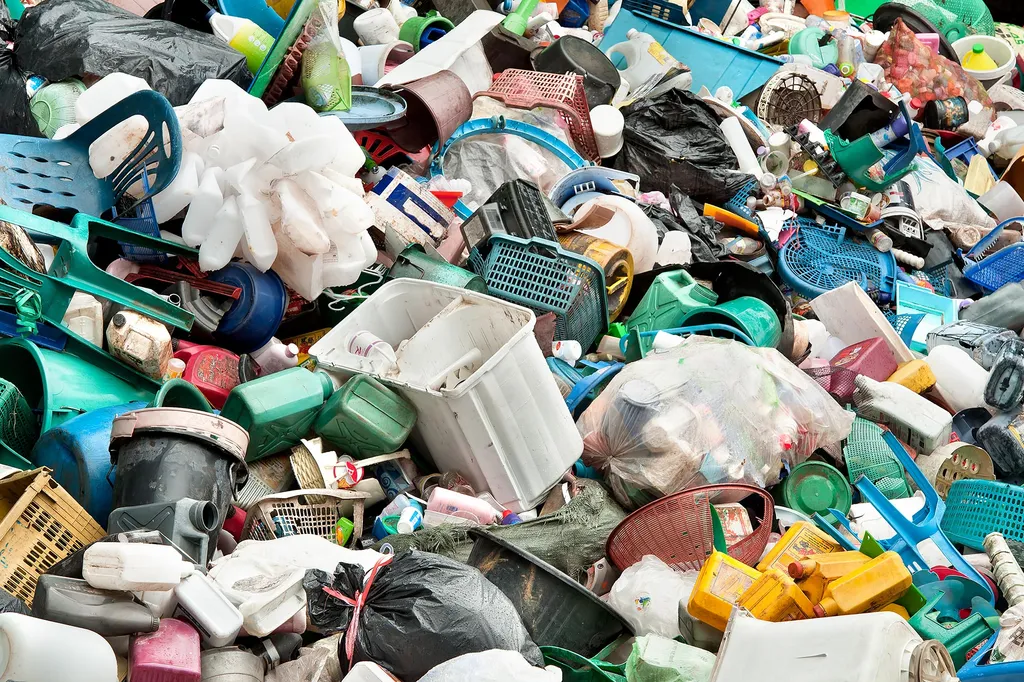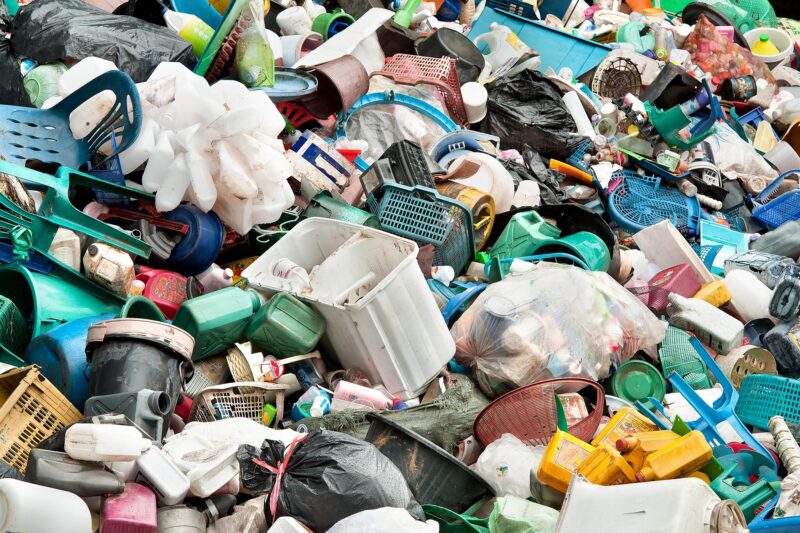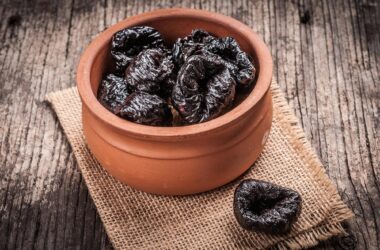
L’espèce de ver lépidoptère Galleria mellonella est capable de décomposer rapidement le polyéthylène grâce à sa salive.
Une équipe de recherche du CSIC a découvert que la salive du ver Galleria mellonella contient des enzymes capables d’initier la dégradation du polyéthylène en un court laps de temps.
Une équipe de recherche du CSIC a découvert que la salive du ver de la cire dégrade le plastique. Cette découverte a de nombreuses applications potentielles pour le traitement ou le recyclage des déchets plastiques. L’équipe a découvert pour la première fois que cette espèce de ver, le lépidoptère Galleria mellonella, peut dégrader le plastique (polyéthylène) en 2017. Ils ont maintenant compris comment il le fait : sa salive contient des enzymes (appartenant à la famille des phénol oxydases) qui peuvent rapidement initier la dégradation du polyéthylène à température ambiante. Federica Bertocchini, chercheuse au CIB-CSIC (Centre de recherche biologique), qui a dirigé l’étude, affirme que ces enzymes sont les premières et les seules connues à l’heure actuelle pour être capables de décomposer le plastique polyéthylène sans nécessiter de prétraitement. Les résultats de l’étude ont été publiés en ligne dans la revue BioRxiv dans l’attente d’une révision. La Fondation Roechling (Allemagne) a contribué au financement de l’étude.
“Pour que le plastique se dégrade, l’oxygène doit pénétrer dans le polymère (la molécule de plastique). Il s’agit de la première étape de l’oxydation, qui résulte généralement de l’exposition au soleil ou à des températures élevées, et qui représente un goulot d’étranglement ralentissant la dégradation des plastiques comme le polyéthylène, l’un des polymères les plus résistants”, explique Bertocchini. “C’est pourquoi, dans des conditions environnementales normales, le plastique met des mois, voire des années, à se dégrader”, ajoute-t-elle.

Le ver de cire dégrade le polyéthylène grâce à des enzymes présentes dans sa salive. Crédit : César Hernández Regal
“Maintenant, nous avons découvert que les enzymes présentes dans la salive du ver de cire réalisent cette étape cruciale : elles oxydent le plastique. Cela signifie qu’elles peuvent surmonter le goulot d’étranglement du processus de dégradation du plastique et accélérer sa décomposition”, ajoute-t-elle.
Le polyéthylène est l’un des plastiques les plus résistants et les plus fréquemment utilisés. Il représente 70 % de la fabrication totale de plastique lorsqu’il est combiné au polypropylène et au polystyrene. Finding solutions to the plastic waste issue is urgent because plastic pollution endangers the health and environment of the world. The biological breakdown of plastics is one of the areas of study that has the most promise and potential. This process, known as biodegradation, involves microorganisms like bacteria and fungi. However, only a small number of microorganisms are known to be able to degrade the strong plastic polymers that make up polyethylene. Furthermore, in most situations, intensive pre-treatment is required to ensure oxidation and thus allow the microorganisms to have some (although gradual) effect on the plastic.
Plastic-eating worms
A few years ago, a new field of research opened up with the discovery that some insect species of the Lepidoptera and Coleoptera orders are able to degrade polyethylene and polystyrene. “In our lab, we discovered the insect that seems to be the fastest of all: the larvae of the lepidopteran Galleria mellonella, commonly known as the wax worm,” says Bertocchini. “These larvae are able to oxidize and break down the polymers in the plastic really quickly,” (after just one hour’s exposure).
“In recent years, efforts have been made to find out how these insects manage to do this. Numerous studies have focused on the microorganisms inhabiting the digestive system of these worms, based on the assumption that the worms can use plastic as food and that its degradation would be the result of their metabolic activity and digestive processes,” remarks the researcher. “But this assumption is highly questionable so, from the start, our research has focused on the worm’s oral cavity,” she explains.
“We have scrutinized the wax worm’s behavior when it comes into contact with polyethylene and found that the enzymes present in the worm’s saliva (i.e., the liquid inside the insect’s mouth) can degrade polyethylene,” Bertocchini tells us. “On coming into contact with saliva, the polymer oxidizes and depolymerizes within a few hours. We have identified degraded residues that form in the presence of the worm’s saliva,” she says.
Furthermore, the researchers analyzed the saliva using electron microscopy and observed a high protein content. “We have isolated two enzymes from the saliva that can reproduce the oxidation produced by the saliva as a whole,” explains the researcher. These two proteins, called Demetra and Ceres, belong to the family of phenol oxidase enzymes.
“We found that the Demetra enzyme had a significant effect on polyethylene, leaving marks (small craters) on the surface of the plastic, visible to the naked eye; this effect was also confirmed by the appearance of degradation products formed after exposure of the polyethylene to this enzyme. The Ceres enzyme oxidizes the polymer too, but does not leave visible marks, suggesting that the two enzymes have a different effect on polyethylene,” she sums up.
How phenol oxidase enzymes work
Phenols are molecules used by plants to defend themselves against potential enemies, such as insect larvae. Therefore, insects could produce phenol oxidase enzymes as a way to oxidize plant phenols, and thus neutralize them, meaning they could feed safely on the plants. Phenols are also present in many plastic additives, which could make them targets for these enzymes and create the necessary conditions for oxidation and depolymerization of the plastic. “So far, this is just speculation and further experiments will be needed to investigate the enzyme’s mechanisms of action in-depth,” researchers warn.
An even more interesting question is how wax worms have acquired this ability. Researchers speculate that it could be due to an evolutionary process. “Wax worms feed on hive wax and pollen from a wide variety of plant species. Considering that hive wax is full of phenols, this type of enzyme would be very useful to these bugs. Indirectly, this would explain why wax worms can break down polyethylene. However, so far this theory is only speculation and we must carry out more research combining insect biology with biotechnology.
Reference: “Wax worm saliva and the enzymes therein are the key to polyethylene degradation by Galleria mellonella” by A. Sanluis-Verdes, P. Colomer-Vidal, F. Rodríguez-Ventura, M. Bello-Villarino, M. Spinola-Amilibia, E. Ruiz-López, R. Illanes-Vicioso, P. Castroviejo, R. Aiese Cigliano, M. Montoya, P. Falabella, C. Pesquera, L. González-Legarreta, E. Arias-Palomo, M. Solà, T. Torroba, C.F. Arias and F. Bertocchini, 8 April 2022, BioRxiv.
DOI: 10.1101/2022.04.08.487620



